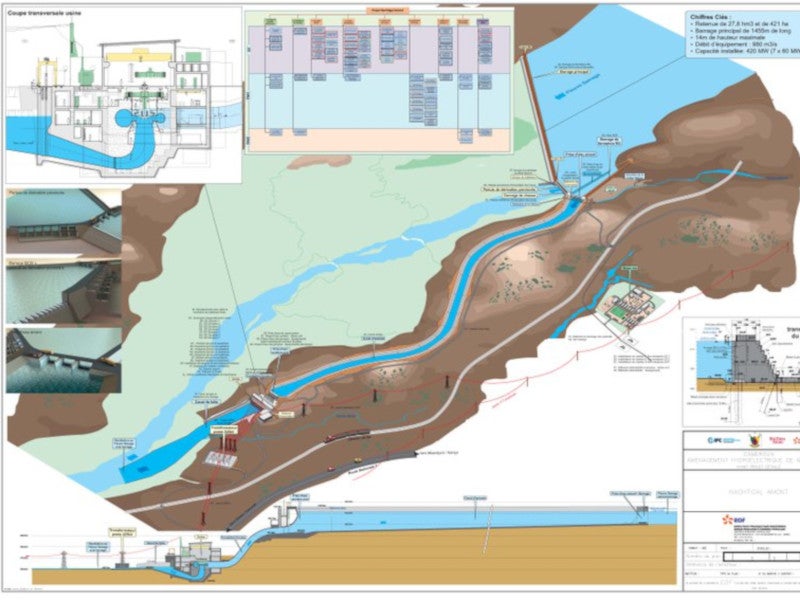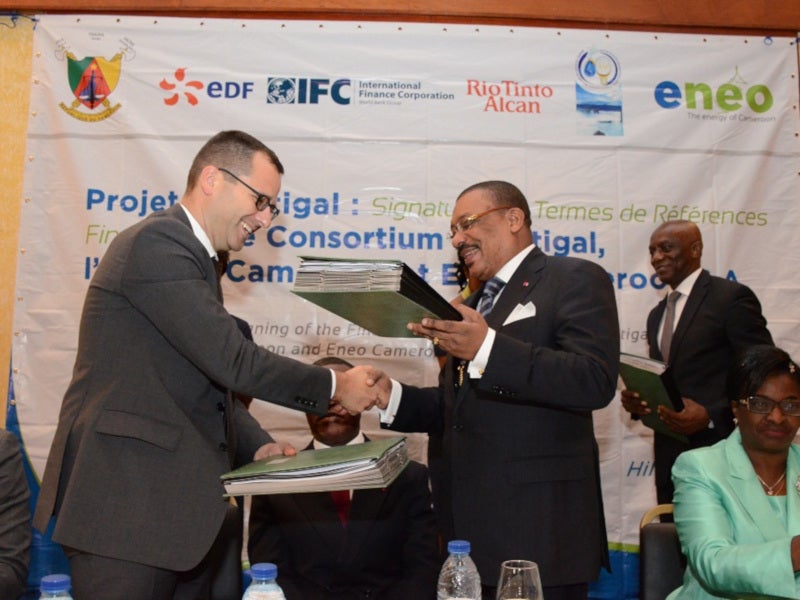Nachtigal hydro power plant is a 420MW run-of-river hydro power project under development on Sanaga River in Nachtigal, Cameroon. The hydropower facility is being developed by Nachtigal Hydro Power Company (NHPC), which is owned by Électricité de France (EDF, 40%), International Finance Corporation (IFC, 30%), and the Republic of Cameroon (30%).
Expected to begin operations in 2023, the €1.2bn ($1.37bn) hydropower plant will generate approximately three terawatt-hour (3TWh) of electricity a year. It is estimated to create more than 1,500 jobs during the construction phase, in addition to saving $100m in electricity generation costs.
The Government of Cameroon (GoC) granted an exclusive right to NHPC, in 2017, to design, build, and operate the project for 35 years under a concession agreement. The rights of the plant will be transferred to the Government, upon expiry of the term.
Nachtigal hydro power lant location
Nachtigal hydro power project is situated on the Sanaga River near Nachtigal falls and is located approximately 65km from Yaounde, the capital city of Cameroon.
The plant will regulate the flow of Sanaga River, alongside the operational Mbakaou, Mapé, Bamendjin, and the Lom Pangar dams.
Nachtigal hydro power plant make-up
The Nachtigal hydropower plant will comprise two roller compacted concrete dams on the Sanaga River, with a length of 2km and a height of approximately 15m. The reservoir will have a surface area of 4.21km² and a storage capacity of 27.8m³.
Water from the dam will be forwarded to the power plant by a 3.3km-long and 14m-deep concrete-lined headrace tunnel, at a rate of 980m³/s.
The powerhouse, which is 142m-long, 36m-tall, and 47m-wide, will be installed with seven 60MW turbines to generate power. An 800m-long tailrace channel will be used to send the water back into the river from the powerhouse.
A 4.5MW secondary power plant is being developed downstream of the dam to generate electricity from environmental flow.
Power transmission
Power generated by the hydropower project will be transmitted to the Nyom 2 substation before being transferred further to the Southern Interconnected Grid (SIG).
A 225kV double busbar substation and a 50.3km-long double-circuit transmission line will be constructed for the same. NHPC is responsible for the transmission line construction, which will be handed over to GoC upon completion.
National Electricity Construction Company (SONATREL) will operate the transmission line.
Financing for the Nachtigal hydro power plant
The Nachtigal hydropower plant is being financed with 75% debt and 25% equity. The total debt funding for the project is $1.02bn, while the funding through equity is $342m.
The project will be the biggest hydropower project ever built in Africa through project finance scheme. The lenders group, including co-developer IFC, comprises 11 finance institutions and four local commercial banks.
Prominent institutions among the lenders group include African Development Bank (AFDB), Agence Francaise de Developpement (AFD), IFC, Societe Generale Cameroun, Standard Chartered Bank Cameroon, Entrepreneurial Development Bank (FMO), and European Investment Bank (EIB).
Contractors involved
The consortium of GE Renewable Energy and Elecnor was awarded an $87m contract, in February 2019, for the supply of Francis turbines for the hydropower plant.
BESIX was awarded the contract for the design and construction of the Nachtigal dam, in August 2018. Tractebel and ISL were chosen as the consultants for engineering and civil works of the project.
Bouygues Energies & Services was awarded the contract for the construction of transmission lines for the hydropower plant.
Environmental impact assessment (EIA) for the plant was prepared by Artelia, while Nodalis provided the technical, economic, and financial advisory services.





